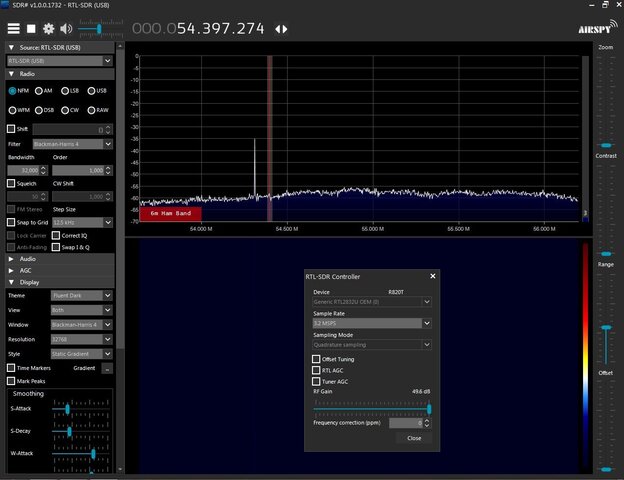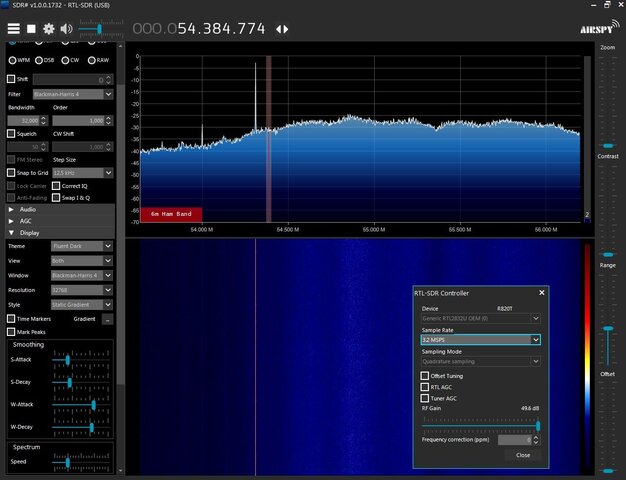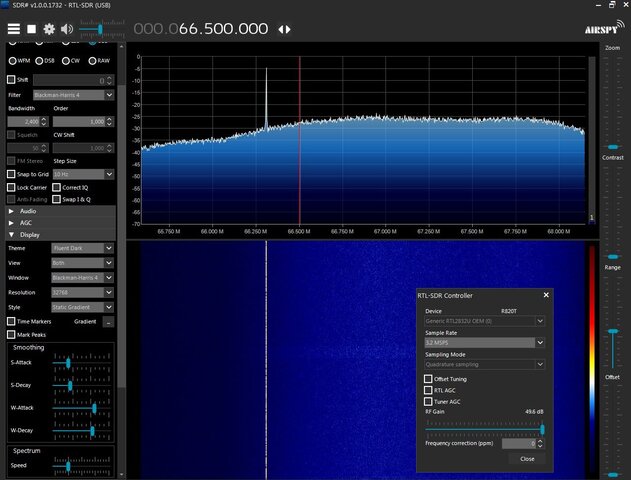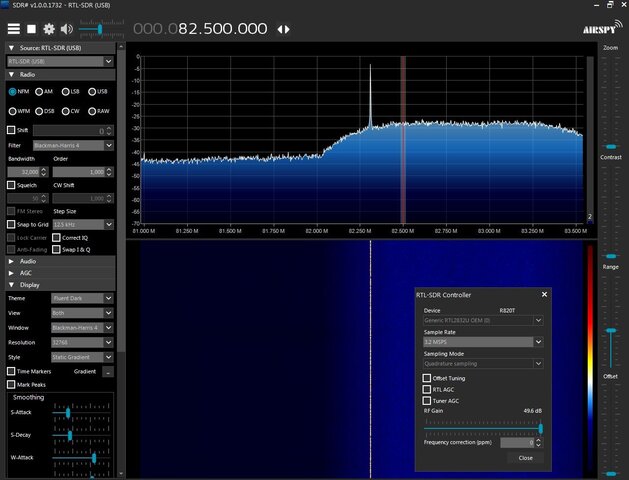Ok, so basically you are dependent on waiting for your local power company to fix those poles. You might be able to work around it, but you'd have to find a high gain Low VHF yagi style antenna, that you can get up HIGH, and away from the power poles to aim directly at your channel 2.
Low VHF interference
- Thread starter freeisforme
- Start date
- Latest activity Latest activity:
- Replies 126
- Views 20K
You are using an out of date browser. It may not display this or other websites correctly.
You should upgrade or use an alternative browser.
You should upgrade or use an alternative browser.
simple questions, how often should i call the electric (2x) company and how long should the wait be?
i thought of that awhile ago but have no where else to go "home all around" unless i take a driveOk, so basically you are dependent on waiting for your local power company to fix those poles. You might be able to work around it, but you'd have to find a high gain Low VHF yagi style antenna, that you can get up HIGH, and away from the power poles to aim directly at your channel 2.
SDR stands for Software Defined Radio or Software Defined Receiver. They tune in a signal that is demodulated in software.I know nothing about SDR's, but I don't think they'll work for this purpose. Not that you can tell for sure from his reply above what he really discovered, that seems to be oddly truncated...
Commercial AM radio ranges from 535 to 1605KHz so your SDR setup is highly suspect in terms of what frequency it is telling you it has tuned. What you might find around 54MHz you wouldn't be able to listen to as it would almost certainly be a DTV television signal on RF channel 2. There may be some emergency services that can legally broadcast audio on that frequency but otherwise it is strictly reserved for commercial television broadcast. In any case, it probably wouldn't be AM modulated audio (NTSC used FM audio and DTV doesn't broadcast a separate audio carrier).maybe i am misunderstanding the SDR, but i can listen to AM radio in 54-60Mhz range.
I don't imagine that SDR is going to get you what you seek.
What I would suggest is that you contact a nearby amateur radio club or amateur radio supporting storefront and see what insights they can offer. Chances are they've had to deal with the same thing and may even have access to the ideal equipment to help track it down.
54KHz is Navy VLF radio.
SDR stands for Software Defined Radio or Software Defined Receiver. They tune in a signal that is demodulated in software.
I know that much, I just question how useful an SDR would be in tracking down noisy power poles. Considering the way I believe they work, they might not easily detect the interference as well as an analog old-school am pocket radio would.
checked 54-60 Mhz with stock SDR antenna and found AM radio.Shawn Hannity, was on one station. No matter the direction of the SDR antenna AM radio still was Any thoughts would be appreciative.
Is it possible that the wrong frequency is tuned on the SDR? Pretty easy to mix-up MHz vs KHz and the number of zeros. 540-600KHz (.54-.60MHz) is AM broadcast band.
An SDR with a small UHF loop antenna (or wire hangar) makes an excellent tool for tracking the source of interference. Even the cheap 8" antenna provided with a SDR dongle will identify nearby interference if used in conjunction with the software RF gain.
I agree on the mixup between kHz and MHz. In the old analog days, there were a lot of issues with channel 2 receiving interferance from the 6 meter ham band (50-54 MHz). It was almost always a problem with a sloppy receiver section of the TV, but that never stopped complaints from being filed and the FCC and local police from becoming involved. Having a noticable antenna was a magnet for these complaints.
The best one was a case where my parents were approached by the FCC, the sheriff, the local police and were eventually sued over interference. The ironic part was that I was in the air force at the time and was deployed to Brazil for that entire summer, but my folks had to prove that my equipment, just sitting there disconnected wasn't causing interference.
The best one was a case where my parents were approached by the FCC, the sheriff, the local police and were eventually sued over interference. The ironic part was that I was in the air force at the time and was deployed to Brazil for that entire summer, but my folks had to prove that my equipment, just sitting there disconnected wasn't causing interference.
in my rush to judgement i could have did that. i post 2 pic there on page 2.Is it possible that the wrong frequency is tuned on the SDR? Pretty easy to mix-up MHz vs KHz and the number of zeros. 540-600KHz (.54-.60MHz) is AM broadcast band.
An SDR with a small UHF loop antenna (or wire hangar) makes an excellent tool for tracking the source of interference. Even the cheap 8" antenna provided with a SDR dongle will identify nearby interference if used in conjunction with the software RF gain.
sounds like a nightmare. hope everything worked out ok.I agree on the mixup between kHz and MHz. In the old analog days, there were a lot of issues with channel 2 receiving interferance from the 6 meter ham band (50-54 MHz). It was almost always a problem with a sloppy receiver section of the TV, but that never stopped complaints from being filed and the FCC and local police from becoming involved. Having a noticable antenna was a magnet for these complaints.
The best one was a case where my parents were approached by the FCC, the sheriff, the local police and were eventually sued over interference. The ironic part was that I was in the air force at the time and was deployed to Brazil for that entire summer, but my folks had to prove that my equipment, just sitting there disconnected wasn't causing interference.
I'm posting on this old thread to make a few comments because I wasn't able to help you as much as I wanted to when you tried to join the TVFool Forum.
Channel 2 is 54-60 MHz; center freq is 57 MHz.
I use this formula for a first approximation:
Dipole length is 5540/Freq in MHz
5540/57 = 97.2 inches
You did it correctly.i divided by the center frequency. I used 300 * 0.95 / 57=5 meter. 39.37 inches in a meter. divided by 2 equals 98.4. i made it 98.5. users.wfu.edu/matthews/misc/dipole
Channel 2 is 54-60 MHz; center freq is 57 MHz.
I use this formula for a first approximation:
Dipole length is 5540/Freq in MHz
5540/57 = 97.2 inches
Using a portable radio that tunes the AM broadcast band can be useful when hunting for noise sources that cause interference to VHF TV signals. Even though the frequencies are far removed from each other, if you hear strong noise on the AM broadcast band, it will also often be on VHF; it certainly is at my location.with nothing more then a AM/FM radio what else could i use ( build or buy, ) to find the noise from utility poles?
An AM battery operated portable radio has a ferrite loop stick antenna that is directional which can help you find the source.
The FCC seems to think a radio that tunes the AM Broadcast Band can be useful:
Interference with Radio, TV and Cordless Telephone Signals
Don't use FM; it rejects noise;A simple method of determining the location of electrical interference is by using a portable battery-powered AM radio tuned to a quiet frequency at the lower end of the dial. You should hear static or a buzzing sound as you get close to the source of the interference. The closer you get, the more intense the static will be.
You can also use a radio that tunes the VHF Aircraft Band which is also AM.
Last edited:
Using an SDR to Hunt for a Channel

Yes, Sean Hannity is on the AM Broadcast Band.
It was a good idea to try an SDR to hunt for channel 2 on VHF-Low. You were way ahead of me; I didn't start learning about SDRs until 2019.
The SDR can be set to receive AM signals on any freq, not just the Broadcast Band.
The RTL-SDR dongle will only show 2.5 MHz of a channel with the SDR# software, so you must tune it to show the low end of the channel, some noise to estimate the SNR, and the pilot. The channel 2 pilot is at 54.310 MHz. My channel 3 pilot is at 60.310 MHz. For any channel, it is 310 KHz above the low end of the channel.
Adiust the software gain for max SNR, which is the difference between the top of the signal and the adjacent noise.

If the noise level is high, you might not have enough signal above the noise for reliable reception:


The RSP1A SDR can show a 10 MHz span:

This is channel 3 with the Airspy R2 SDR and Spectrum Spy software:

Your image:UPDATE: I call the electric company and i felt like i was getting the run around without know 100% that it was the outside power lines. So i bought a SDR (awesome, RTL SDR) and checked 54-60 Mhz with stock SDR antenna and found AM radio.Shawn Hannity, was on one station. No matter the direction of the SDR antenna AM radio still was Any thoughts would be appreciative.
Yes, Sean Hannity is on the AM Broadcast Band.
It was a good idea to try an SDR to hunt for channel 2 on VHF-Low. You were way ahead of me; I didn't start learning about SDRs until 2019.
The SDR can be set to receive AM signals on any freq, not just the Broadcast Band.
The RTL-SDR dongle will only show 2.5 MHz of a channel with the SDR# software, so you must tune it to show the low end of the channel, some noise to estimate the SNR, and the pilot. The channel 2 pilot is at 54.310 MHz. My channel 3 pilot is at 60.310 MHz. For any channel, it is 310 KHz above the low end of the channel.
Adiust the software gain for max SNR, which is the difference between the top of the signal and the adjacent noise.
If the noise level is high, you might not have enough signal above the noise for reliable reception:
The RSP1A SDR can show a 10 MHz span:
This is channel 3 with the Airspy R2 SDR and Spectrum Spy software:
Last edited:
This is a scan of VHF-High by lenlab that shows serious interference, probably caused by power line noise:UPDATE: I call the electric company and i felt like i was getting the run around without know 100% that it was the outside power lines.
An RTL-SDR.COM V3 dongle was used with free open-source spectrum analyzer software from github. The software isn't available ready-to-use, it must be assembled in a folder. I found that difficult to do.
Last edited:
Thanks Rabbit73. I will check it out when i get more time, maybe Thursday or Friday. Keep me informed im interested.This is a scan of VHF-High by lenlab that shows serious interference, probably caused by power line noise:
View attachment 146886
An RTL-SDR.COM V3 dongle was used with free open-source spectrum analyzer software from github. The software isn't available ready-to-use, it must be assembled in a folder. I found that difficult to do.
View attachment 146887
Thank you for the image. I see the pilot for channel 2, but the rest of the signal must be buried in the noise. This is your image:rabbit73: here is my RF channel 2 when it comes in. im able to receive the station more often cause they almost tripled there output about a year ago. but its hit or miss. i still use the twin lead antenna.
You weren't able to receive that channel at that time, were you? It looks like it's too weak.
I tried to simulate a similar scan with my channel 3:
Similar threads
- Replies
- 6
- Views
- 2K
- Replies
- 7
- Views
- 3K
- Replies
- 36
- Views
- 7K
- Replies
- 1
- Views
- 3K





